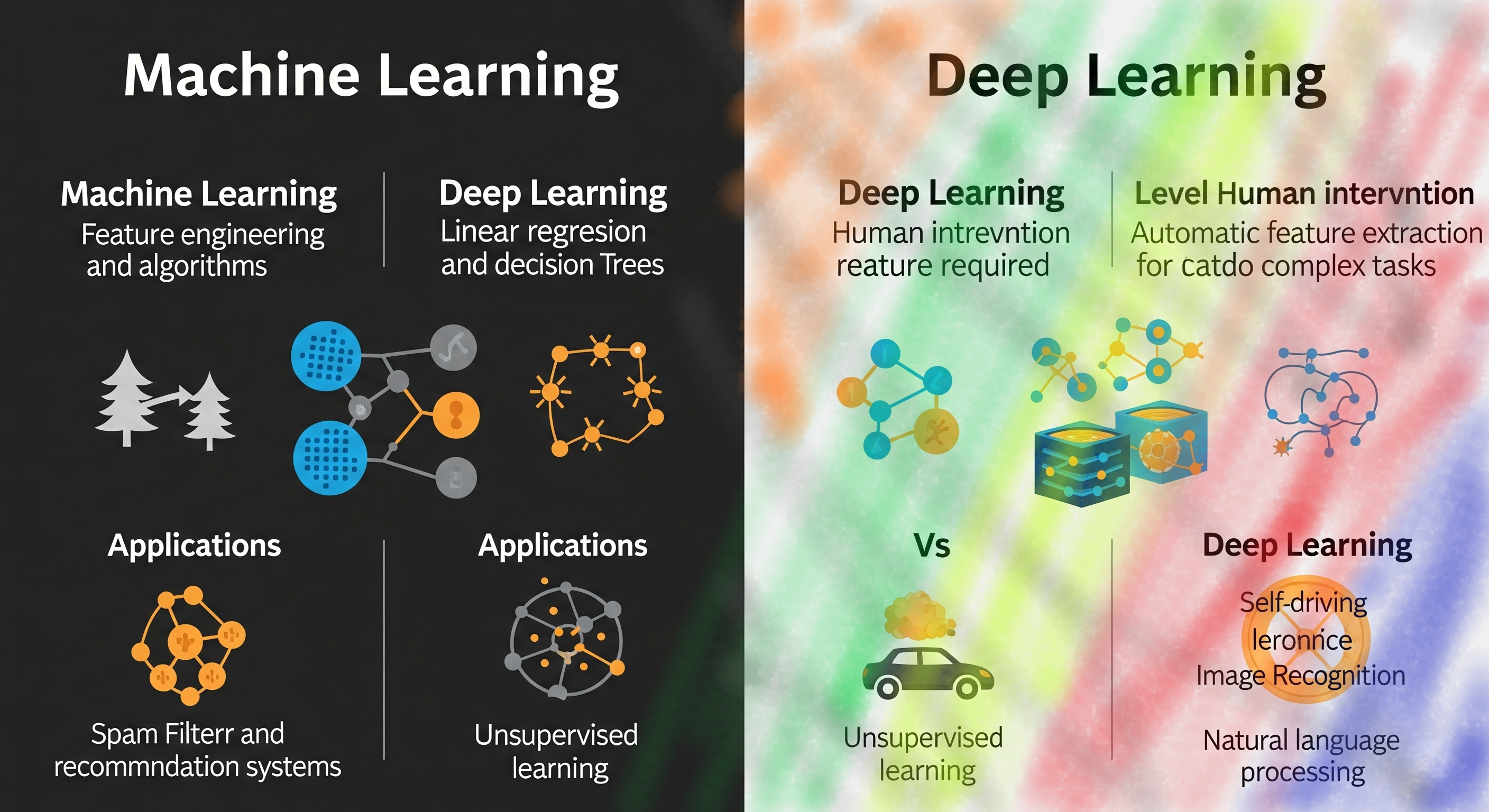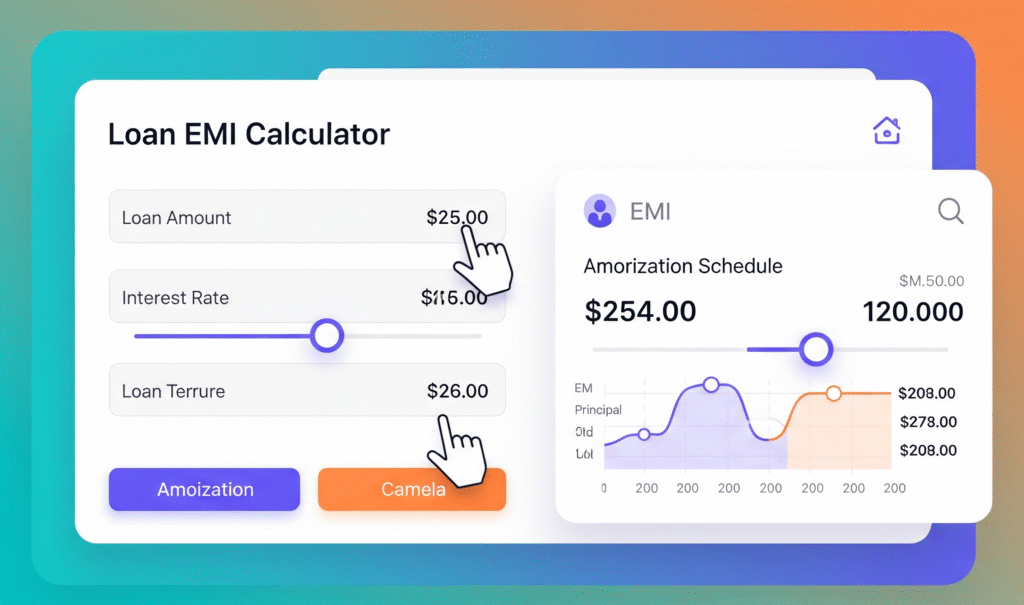
Introduction:
Two important terms are much talked about in the world of Artificial Intelligence (AI)—Machine Learning (ML) and Deep Learning (DL). Though both of these techniques are branches of AI, there are many fundamental differences between them. This blog post will explain all the major differences, areas of use, advantages, limitations, and future prospects between Machine Learning and Deep Learning in detail.
Chapter 1: What is Machine Learning?
Machine learning is a technique that gives computers the ability to learn based on experience (data). In this, decisions are made not by programming, but by learning patterns from data. It is based on methods such as “supervised learning”, “unsupervised learning” and “reinforcement learning”.
Examples: Email spam filters, Netflix recommendations, credit card fraud detection, etc.
Chapter 2: What is Deep Learning?
Deep learning is a more advanced and powerful branch of machine learning. This technique teaches computers to think like a human brain.
It uses artificial neural networks, which mimic the workings of the human brain. These networks understand and make meaning of data layer by layer.
The great thing about deep learning is that it can extract accurate and useful information from very large and complex data — that too without much human help.
Example: Face recognition technology, voice assistants like Siri and Alexa, and self-driving cars all use deep learning techniques.
This technology is gradually getting mixed into every part of our lives — whether it is security, healthcare, or everyday convenience.
Chapter 3: Key Differences between Machine Learning and Deep Learning
While machine learning and deep learning share the goal of enabling data-driven decisions, they differ significantly in their approach, complexity, and applications. Below is a detailed comparison to clarify their distinctions:
1. Definition and Scope
- Machine Learning: A broad field of AI where systems learn from data to make predictions or decisions. It includes various algorithms like decision trees, support vector machines, and neural networks.
- Deep Learning: A specialized subset of ML that uses multi-layered neural networks to process complex data patterns, mimicking human brain functions.
2. Data Dependency
- Machine Learning: Performs well with smaller datasets and relies on feature engineering, where humans manually select relevant data features.
- Deep Learning: Requires large volumes of data to achieve high accuracy, as neural networks automatically extract features from raw data.
3. Computational Power
- Machine Learning: Can run on standard CPUs and doesn’t always require high-end hardware.
Deep Learning: Demands powerful GPUs or TPUs due to the computational intensity of processing multiple neural network layers.
4. Feature Engineering
- Machine Learning: Requires manual feature selection and domain expertise to identify relevant data attributes.
- Deep Learning: Automatically extracts features through its layered architecture, reducing the need for human intervention.
5. Interpretability
- Machine Learning: Models like linear regression or decision trees are easier to interpret and understand.
- Deep Learning: Neural networks are often considered “black boxes” due to their complex, layered decision-making process.
6. Applications
- Machine Learning: Ideal for simpler tasks like spam detection, predictive analytics, and customer segmentation.
- Deep Learning: Excels in complex tasks like image recognition, natural language processing (e.g., chatbots), and autonomous driving.
7. Training Time
- Machine Learning: Faster to train due to simpler algorithms and less data processing.
- Deep Learning: Requires longer training times because of large datasets and complex computations.
Example Comparison:
A spam email filter might use a machine learning algorithm like Naive Bayes to classify emails based on word frequency.
A voice assistant like Alexa relies on deep learning to understand natural speech patterns and context.




